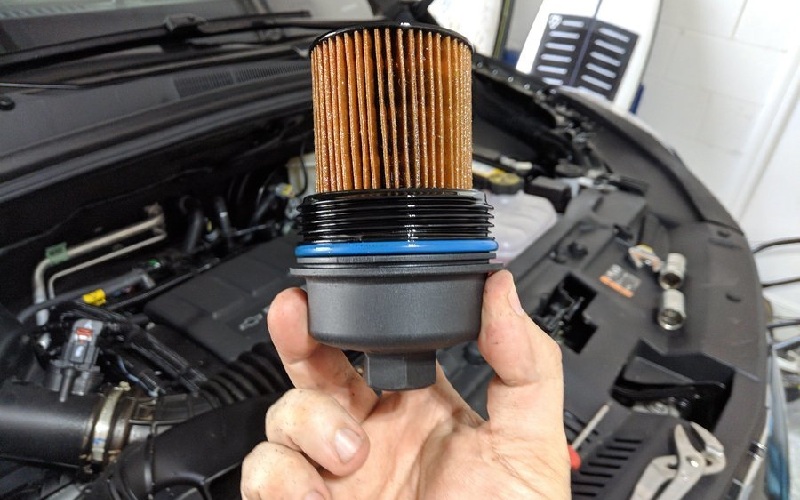Chevy Trax Electrical System: Diagnosis Guide and Solutions
The Chevrolet Trax electrical system presents a sophisticated network of components working in harmony to power everything from essential functions to comfort features. This comprehensive guide provides an authoritative approach to diagnosis and troubleshooting of electrical issues that may arise in your Chevy Trax. Whether you’re a professional technician or an enthusiastic owner with mechanical […]
The Chevrolet Trax electrical system presents a sophisticated network of components working in harmony to power everything from essential functions to comfort features. This comprehensive guide provides an authoritative approach to diagnosis and troubleshooting of electrical issues that may arise in your Chevy Trax. Whether you’re a professional technician or an enthusiastic owner with mechanical aptitude, this resource offers valuable insights into the electrical architecture of this popular crossover SUV.

The Trax Electrical System Architecture
The Chevy Trax utilizes a modern 12-volt electrical system with a centralized architecture. At its heart lies a maintenance-free battery, typically rated between 60-80 amp hours, responsible for providing initial startup power and supporting electrical functions when the engine isn’t running. The alternator, capable of producing up to 130 amps, maintains battery charge and powers the vehicle’s electrical systems during operation.
Power distribution occurs through multiple fuse boxes and junction blocks strategically located throughout the vehicle. The main fuse box resides in the engine compartment, while a secondary fuse panel can be found inside the cabin, typically on the driver’s side dash end panel or under the steering column. These panels house fuses and relays that protect individual circuits from power surges and control various systems.
The Trax employs a sophisticated Body Control Module (BCM) that manages many electrical functions, including lighting, power locks, windows, and various comfort systems. This computer integrates with other modules via the Controller Area Network (CAN) to facilitate communication between different vehicle systems. Understanding this architecture provides the foundation for effective electrical diagnosis.
Essential Diagnostic Tools and Equipment
Proper diagnosis of the Chevy Trax electrical system requires specific tools designed for automotive electrical work. A quality digital multimeter (DMM) with voltage, resistance, and continuity testing capabilities stands as the most fundamental tool in your arsenal. Look for one that can measure at least 20 volts DC with millivolt precision.
A circuit tester with LED indicators allows for quick voltage checks at fuses, connectors, and other accessible points. For more advanced diagnostics, an OBD-II scanner capable of accessing multiple control modules will prove invaluable. Models with live data streaming and bidirectional control offer the most comprehensive testing capabilities.
Wire pin-out tools help access terminals within connectors for direct testing without damaging the connector housing. A power probe can inject power directly into circuits for component testing. When combined with factory wiring diagrams (available through service information systems), these tools enable systematic diagnosis of even complex electrical issues.
For modern features like the infotainment system, specialized equipment may be required to diagnose software-related issues. Always ensure proper electrical safety by disconnecting the battery before performing invasive tests or repairs on any circuit.
Battery and Charging System Diagnosis
The battery and charging system form the foundation of the Trax electrical health. Begin your diagnosis by inspecting the battery terminals for corrosion, ensuring they’re clean and securely connected. Check battery voltage with your multimeter – a healthy battery should read approximately 12.6 volts when fully charged and the vehicle is off.
Test the charging system by starting the engine and measuring voltage at the battery terminals. Readings should increase to 13.5-14.5 volts at idle, indicating proper alternator function. If readings remain below 13.5 volts or exceed 14.5 volts, further alternator testing is warranted. Low voltage suggests a failing alternator, while high voltage indicates a voltage regulator issue.
Perform a load test to assess battery capacity and condition. This can be done with a dedicated battery load tester or by monitoring voltage while engaging high-draw accessories like headlights and the climate control fan. Voltage should remain above 9.6 volts during cranking and recover quickly afterward.
When replacing the battery, ensure the new unit matches the original specifications for Cold Cranking Amps (CCA) and Reserve Capacity (RC). The Trax typically requires a Group 47 (H5) or Group 48 (H6) battery, depending on model year and options. Always disconnect the negative terminal first and reconnect it last to prevent electrical shorts during service.
Lighting System Solution Techniques
The Trax lighting systems include exterior illumination (headlights, taillights, turn signals) and interior lighting controlled through the BCM. When diagnosing lighting issues, first check the corresponding fuses in both the engine compartment and interior fuse panels.
For headlight problems, verify proper operation of the headlight switch and inspect the bulbs for failure. The Trax uses halogen bulbs in most trim levels, with LED lighting available on higher-end models. If the bulbs and fuses are in good condition, test for proper voltage at the headlight connectors with the lights activated. Readings should be near battery voltage (12+ volts).
Turn signal issues often stem from bulb failure or flasher relay problems. The Trax uses an electronic flasher integrated into the BCM rather than a traditional relay. Unusual flashing rates typically indicate a bulb failure or excessive current draw. Test bulb sockets for correct voltage and ground connections.
Interior lighting problems often stem from issues with dimmer controls or door switches. The dome light and courtesy lighting depend on proper door switch function. Test door switches with a multimeter in continuity mode – they should show continuity when the door is open and no continuity when closed. The BCM controls gradual fade-in and fade-out effects, so immediate lighting changes may indicate a BCM programming issue.
Power Accessory and Window System Diagnosis
Power accessories in the Trax include power windows, door locks, mirrors, and seats on certain trim levels. These systems typically operate through the BCM using relay-controlled circuits. When diagnosing power window issues, first check the master power window switch and individual window switches for proper operation.
Test window motor function by applying direct power (using a power probe with appropriate fusing) to the motor terminals. If the motor operates correctly with direct power but not through the switch, inspect the switch and wiring circuit. Power window systems employ hall-effect sensors for position feedback, which can fail and cause improper operation.
Door lock actuators operate on a similar principle. Test for proper voltage at the actuator connectors when activating locks through the key fob or door switches. The Trax uses a multiplexed system for door locks, where signals pass through the BCM rather than direct power to actuators. This can complicate diagnosis without proper testing equipment.
For power mirror issues, check the mirror select switch and directional controls before testing the motors directly. Heated mirrors connect to the rear defrost circuit and should activate when this system is engaged. Use a thermal imaging device or surface temperature gauge to verify proper heating element function.
Infotainment and Electronic Control Module Issues
The Trax infotainment system integrates audio, connectivity, and vehicle information through a central touchscreen interface. When diagnosing system issues, begin with a soft reset by pressing and holding the power button for 10 seconds. This resolves many temporary glitches without data loss.
For persistent problems, check for software updates that may address known issues. The Trax may support over-the-air updates or require dealer programming, depending on model year. System lockups or screen freezes often indicate software corruption that may require a complete system reset or reprogramming.
Connectivity problems with Bluetooth or smartphone integration typically stem from compatibility issues or outdated software. Try removing and re-pairing devices, ensuring the phone’s operating system is current. Audio quality issues may indicate speaker problems, which can be isolated by adjusting the volume balance to specific speakers during playback.
For more critical electronic control modules like the Engine Control Module (ECM) or Transmission Control Module (TCM), diagnosis requires a quality scan tool. These modules store Diagnostic Trouble Codes (DTCs) that point to specific circuit or component failures. Always check for related technical service bulletins that might identify known issues before extensive diagnosis.
Understand Your Chevy Trax Diagnostic System
The electrical system of your Chevy Trax represents a complex but logical network of components designed to provide years of reliable service. By understanding the fundamental architecture and applying systematic diagnostic techniques, most electrical issues can be identified and resolved efficiently. Whether you’re troubleshooting a simple lighting problem or addressing more complex electronic concerns, this guide provides the foundation for successful electrical system diagnosis. Remember that safety always comes first – disconnect the battery before working on any circuit, and seek professional assistance for issues beyond your comfort level or technical capability.
5 Chevy Trax Electrical System Facts
- The Chevy Trax features a sophisticated electrical load management system that senses battery condition and selectively disables non-essential accessories to prevent complete battery discharge.
- Later model Trax vehicles incorporate over 30 separate microprocessors communicating over a high-speed data network, with the ability to share information at speeds up to 500 kilobits per second.
- The keyless entry system operates on a rolling code encryption that generates a new transmission code each time the key fob button is pressed, making it virtually impossible to duplicate.
- Some Trax models feature an automatic battery rundown protection that turns off interior lights and accessories after 20 minutes if left on accidentally.
- The power distribution system in the Trax can prioritize critical systems during low-voltage conditions, ensuring that essential functions like engine management receive power even when the electrical system is compromised.
Questions and Answers About the Chevy Trax
How can I test if my Trax alternator is functioning properly?
- Start the engine and measure battery voltage with a multimeter. A properly functioning alternator should produce between 13.5 and 14.5 volts at idle. You can also perform a load test by turning on high-draw accessories like headlights, rear defrost, and HVAC blower on high – voltage should remain above 13 volts with these loads active.
Why do my Trax dashboard lights flicker occasionally?
- Flickering dashboard lights typically indicate either a loose connection in the instrument panel, a failing dimmer switch, or issues with the charging system. Check battery terminal connections first, then inspect the alternator output. Persistent flickering with a healthy charging system may point to a BCM communication issue that requires dealer diagnosis.
What causes intermittent electrical problems in my Trax?
- Intermittent electrical issues often stem from loose or corroded connections, damaged wiring harnesses, or faulty ground points. Vibration and temperature changes can exacerbate these problems. Systematically inspect wiring at common flex points near doors, under the dash, and around the steering column. Water intrusion from sunroof drains or windshield seals can also cause sporadic electrical gremlins.
My Trax power windows work inconsistently. What should I check?
- Start by checking the 30-amp power window fuse in the driver’s side fuse panel. Next, test the master power window switch for proper operation – debris or liquid damage can cause intermittent function. The window regulators contain position sensors that may fail, causing the auto-up/down feature to malfunction. Try resetting the window memory by fully lowering the window, then pull the switch up and hold for 3 seconds after the window fully closes.
Why does my Trax battery drain overnight?
- Excessive parasitic draw can discharge your battery when the vehicle is off. Normal draw should be under 50 milliamps after all systems have gone to sleep (usually 20-30 minutes after locking). Common culprits include malfunctioning BCM relay circuits, aftermarket accessories, or interior lights that don’t shut off properly. Use an ammeter in series with the negative battery cable to measure current draw, then pull fuses systematically to isolate the circuit causing excessive drain.
*Disclaimer: Content contained in this post is for informational purposes only and may include features and options from US or international models. Please contact the dealership for more information or to confirm vehicle, feature availability.*



